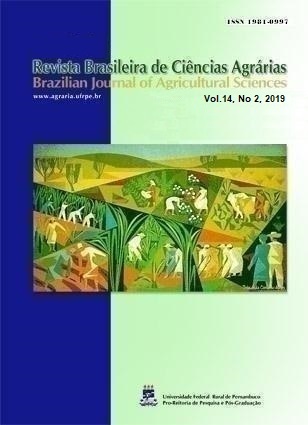Competitive barley ability coexisting with ryegrass densities
DOI:
https://doi.org/10.5039/agraria.v14i2a5630Keywords:
BRS Elis, Hordeum vulgare, Lolium multiflorumAbstract
The barley culture has been conquering space in Southern Brazil, being an option for rotation with wheat. One of the main constraints for the increased productivity is the race against weed, especially ryegrass. Therefore, this study aimed to evaluate the barley competitive ability (Hordeum vulgare) against the ryegrass (Lolium multiflorum), in relation to the nitrogen absorption and to measure the density in which the culture is negatively affected. For this, a field experiment was conducted using experimental designs of randomized blocks, where the barley coexisted with different ryegrass densities (0, 4, 16, 32, 64 and 128 m-2). The analyzed varieties were plant height, chlorophyll, number of barley and ryegrass stems, barley and ryegrass dry mass, leaf area, number of spikes, number of grains per spike, the weight of a thousand grains and yield. The ryegrass interferes negatively on the barley’s development and productivity, even in low densities, being necessary its control to four plants m-2.
Downloads
Downloads
Published
How to Cite
Issue
Section
License

This work is licensed under a Creative Commons Attribution-NonCommercial 3.0 Unported License.


